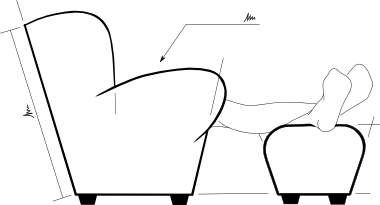Structural Epoxies - sticking it together
Almost all metal cycle frames have welded joints, because welding is a strong and simple jointing technique for metal. (I have seen an aluminium framed trike constructing with no welding, but it’s definitely the exception) However welding is a skill, and not every home builder will have the experience necessary to weld a chassis with good joints and minimal distortion. Because of this, the Atomic Duck is engineered to use structural adhesives for chassis connections.
Adhesive joints do not have the same properties as welded joints, and the chassis is engineered to account for this. Where welded joints are almost as strong as the surrounding material in all loading directions (actually the fusion zone is normally stronger, but the immediate surrounding material of the heat affected zone is normally weaker because of the heat); for adhesives, the loading direction makes a big difference in strength.
Adhesive bonds perform well in compression and shear, but do not require much force to peel apart when the
adhesive is in tension. As an illustration, sticky tape is very easy to peal off a surface (adhesive in tension), but is very difficult to remove by squashing the tape onto the surface (adhesive in compression) and is very difficult to move by sliding across a surface (adhesive in shear). To overcome the low peal strength of adhesives, all the joints in the Atomic Duck chassis are engineered so there is no tension across the joints in normal use.
If you’re worried by the idea of using an adhesive to construct a load-bearing structure from metal, don’t be. Adhesive bonding of metals is very common in the aeronautical industry, for passenger and military aircraft; and the low weight of the Lotus Elise is due to the aluminium chassis with structural epoxy joints. (I’d be surprised if Lotus weren’t using something similar to 3G ScotchWeld 9323-2 B-A, maybe made to order with a red colour in, followed by 1 hour curing time in an oven)
Adhesive Selection
Rather than prescribe a single adhesive for construction, I want instead to give a selection that can be used. With the number of producers, and availability based on the country of purchase, it’s far better for a builder to use an adhesive that is available where they live instead than having to import some, just for a lack of information. Below is list of recommended adhesives, where the working time a shear properties are good enough for Atomic Duck construction, and a few alternatives that are very close, or more difficult to buy.
From the selection below, the best adhesive choice is probably the ScotchWeld DP460. It has high shear strength with low time to handling and cure, while still having an hour for handling and is currently offered for sale in both the UK and USA. If you’re unsure about the adhesive process though, the Henkel Hysol 9394 and ScotchWeld DP490 both have 1½ hours to get things positioned correctly.
Recommended Adhesives:
-
-
Working Time: 60 mins
-
Handling Time: 6-24hrs
-
Cure Time (full strength): 5 days
-
Shear Strength: 26 MPa
-
Notes: Available in the UK
-
-
-
Working Time: 90 mins
-
Handling Time: <24 hrs
-
Cure Time (full strength): 3-5 days
-
Shear Strength: 29 MPa
-
Notes: Available in the USA
-
-
3M ScotchWeld EPX Structural Epoxy Adhesive DP460 (USA)
-
Working Time: 60 mins
-
Handling Time: 4 hrs
-
Cure Time (full strength): 5 days
-
Shear Strength: 31 MPa
-
Notes:
-
-
3M ScotchWeld EPX Structural Epoxy Adhesive DP490
-
Working Time: 90 mins
-
Handling Time: 6 hrs
-
Cure Time (full strength): 7 days
-
Shear Strength: 30 MPa
-
Notes:
-
-
Huntsman Araldite AV4076-1 / HY 4076
-
Working Time: 60 mins
-
Handling Time: 6-10 hrs
-
Cure Time (full strength): 7 days
-
Shear Strength: ~28 MPa
-
Notes:
-
Alternative Adhesives:
-
-
Working Time: 180 mins
-
Cure Time (full strength): 7 days @ 25°C / 60 mins @ 65°C
-
Shear Strength: 29/31 MPa
-
Notes: The adhesive is not available in retail packs, but is ideal for industrial production with an autoclave/oven
-
-
-
Working Time: 40 mins
-
Handling Time: 3.5-6 hrs
-
Cure Time (full strength): 7 days
-
Shear Strength: ~18 MPa
-
Notes: Low shear strength may mean reduced vehicle service life
-
-
-
Working Time: 40 mins
-
Handling Time: 3-5 hrs
-
Cure Time (full strength): 7 days
-
Shear Strength: ~18 MPa
-
Notes: Low shear strength may mean reduced vehicle service life
-

James Murphy wrote, “The Windcheetah was (presumably still is) glued, not welded - precisely because it was intially a self-build kit. It is a significant trike - in terms of the history of the recumbent tricycle - but that probably doesn't stop it being an exception... assuming that that's the exception you meant (-:”